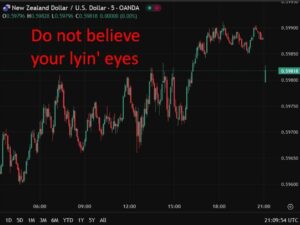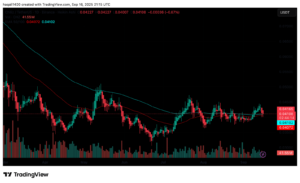Trading Checklist: Important Steps Before Entering Any Trade

A new trading day begins. You are ready to settle into your routine. But where to start, and how to avoid mistakes? That is when a successful trader’s checklist proves useful.
This set of rules will help you trade most effectively. If you do not have a checklist yet, use the simple 8-step trading checklist template below to navigate the world of trading.
If you already have one, it may be time for an upgrade. Markets evolve, and your trading tools should be adjusted.
The article covers the following subjects:
Major Takeaways
- A checklist is a practical tool that helps traders maintain a disciplined approach and stay consistent.
- It prevents typical mistakes caused by haste or emotions.
- The structure of a checklist may vary, but the key elements remain relevant.
- The main difference lies in the personal approach to risk management.
- It is crucial to combine technical and fundamental analyses to maintain a clear perspective.
- Sometimes you can deviate from the rules if it makes sense.
What is a Trading Checklist?
A checklist is a framework of guidelines that helps traders base their decisions on logic, facts, and structured analysis. Amid high volatility, especially on stock exchanges, a checklist becomes a vital tool for controlling emotions and avoiding impulsive moves. It works as a filter, highlighting profitable trades while weeding out unnecessary risk.
A checklist keeps you focused on a precise sequence of steps, instills a sense of discipline, and supports consistent results over the long run. You can tailor it to your own style, but the purpose never changes: to cut out random trading decisions and keep trading anchored in clear principles. It is equally important for newcomers and experienced traders.
Your Trading Checklist
A trader should always be prepared for the trading day. Forex trading is just like any other job. Your decisions have consequences and can affect your well-being. Let’s review eight simple steps that will guide you through your trading journey.
1. Trading Account
Before you start the trading day, review your account carefully: check your free margin, account balance, trade volume, and the status of your open positions. This helps you decide whether it makes sense to open new trades or to manage existing ones. Do not overload your account, as this can increase the risk of a margin call, especially if the market is unstable.
Sometimes, the smartest decision is to stay out of the market, even when trading signals look tempting. Thoughtful account management is what keeps trading steady and risks under control. This analysis helps you reduce the likelihood of acting on impulse and utilize your total trading capital more efficiently.
2. Financial Instrument
Before you trade, ensure you understand the instrument you are dealing with, whether it is a stock, currency pair, cryptocurrency, or metal. This choice defines your strategy and method of market analysis. Each asset has its own behavior, volatility, and sensitivity to news. For example, cryptocurrencies are more prone to sudden fluctuations than currency pairs.
Using both technical and fundamental analysis provides a more comprehensive view of the market. For instance, news about mergers, sanctions, or interest rate changes can override chart signals. Thus, it is crucial to tailor your approach to each instrument, think flexibly, and factor in the current market context.
3. Confirming Indicators
To make signals more reliable, use technical indicators that confirm the price action. Choose tools from different categories, such as trend indicators, oscillators, moving averages, or volatility indicators. For instance, combining the RSI (Relative Strength Index), an oscillator, with Bollinger Bands, a volatility indicator, can help you spot overbought conditions and breakout points more precisely.
Moreover, using indicators that duplicate each other will not improve your analysis, as they only echo the same information. Carefully check the settings and that the data you rely on is relevant. In practice, two or three well-tested tools are more effective than a collection of little-known ones. Additionally, always adjust your indicator settings to fit both your strategy and the current market conditions.
4. Risk to Reward Ratio
Assessing the risk-to-reward ratio is a key part of trading. A good benchmark is 1:2 or higher. You risk one dollar for the chance to make two. This way, even a series of losing trades can still keep you ahead. When calculating the ratio, consider not only technical levels, such as support and resistance levels, but also fundamentals, volatility, and market sentiment.
Avoid trades with a poor risk-to-reward ratio, even if the signal looks convincing. Staying selective builds discipline and supports long-term consistency. Before entering the market, think not only about where to open a trade but also about your exit plan and the loss you are ready to accept.
5. Risk Level
Successful traders keep the risk on each trade small, usually around 1% to 5% of their account. The right level depends on your strategy, market conditions, and experience. During volatile market conditions, it is advisable to lower your risk level to prevent sudden losses. Additionally, consider the effects of macroeconomic news, as they can spark significant price fluctuations.
Always set stop-loss orders and do not increase your lot size without careful calculation. Control your position size and risk level to protect your capital and continue trading even after a period of losses.
6. News Impact
Fundamental factors can dramatically influence market movements. Therefore, review the a reliable economic calendar before entering trades. Major news events, such as central bank meetings, employment or inflation reports, can trigger sharp movements. Even a trade backed by solid technicals can go wrong if the news drives the market in the opposite direction.
If you do not trade on news, it is safer to stay on the sidelines until market volatility calms down. Besides, pay attention to when news is released in different regions, so you know in advance when the market might get active. This way, you are less likely to be caught by sudden spikes.
7. Making Exceptions
Any trading system allows for exceptions, but they should be clearly justified. If the market behaves differently from the usual pattern, it is acceptable to step away from the plan. Just make sure to record that decision in your trading journal. Later, you can review the outcome and see whether the exception made sense.
The key is not to mistake a well-reasoned exception for an emotional impulse. A solid system allows for flexibility, but not chaos. Traders need to adapt while still staying in control. Exceptions should be rare and clearly defined.
8. Trading Plan
Before opening a trade, check all key parameters: buy or sell signals, the strength of the trade setup, possible reversal points, entry and exit points, risk, and whether it aligns with your overall trading plan. If everything checks out, the trade is reasonable. A quick final review helps you avoid acting on impulse. And if you still feel unsure, it is best to wait.
Sticking to your plan builds discipline, and discipline is the foundation of successful trading. Just one careless trade can wipe out the gains from several successful ones. That is why the final review is not just a formality, but a key part of the decision-making process.
Why Should You Use a Trading Checklist?
In 2025, with news moving fast and markets more volatile than ever, it is easy for traders to get off track. In such an environment, it is especially crucial to avoid rushed, emotional decisions. A checklist works as a steady guide, allowing traders to adhere to a clear strategy. It helps maintain a systematic approach and filters out emotional impulses that often lead to significant losses.
A checklist helps you evaluate the market carefully, checking each step against your trading plan. Even when conditions change, it keeps your approach steady and consistent.
Common Mistakes Traders Make Without a Checklist
Even experienced traders make mistakes if they do not follow a clear algorithm. Trading without a comprehensive checklist can lead to impulsive actions, irrational risks, and a loss of discipline. Here are the main mistakes to avoid.
- Poor risk management. Neglecting risk management strategies can result in substantial losses. Without a clear stop loss and proper position sizing, a trader can lose a large part of their deposit in just a few trades.
- Chasing losses. The urge to recover lost funds often leads to impulsive trades, oversized positions, and straying from the plan. This behaviour only exacerbates the situation and increases potential losses.
- Ignoring news. Trading without accounting for fundamentals is risky. Unexpected economic data, interest rate decisions, or geopolitical events can reverse a trend in minutes and wipe out a position.
- Trading on emotions. Emotions such as fear, greed, or anger prevent rational decision-making. Without self-discipline, traders turn the market into a game rather than a conscious strategy.
- Lack of a plan. If trading is based on exceptions rather than strategy, success becomes a matter of chance. A reliable plan and adherence to it are the basis for stable and balanced results.
Conclusion
A checklist is an essential element of successful trading. It reduces the likelihood of errors, helps you stay focused, and follow your strategy. Every trader needs such a tool, regardless of their experience and trading style.
Using a checklist regularly helps you stay aware of your actions and make more informed decisions. It makes trading more structured and predictable, while protecting you from emotional or impulsive moves that can erode the amount of capital in your account.A well-designed checklist builds confidence in every trade and helps you stay consistent over the long run.
The content of this article reflects the author’s opinion and does not necessarily reflect the official position of LiteFinance broker. The material published on this page is provided for informational purposes only and should not be considered as the provision of investment advice for the purposes of Directive 2014/65/EU.
According to copyright law, this article is considered intellectual property, which includes a prohibition on copying and distributing it without consent.






